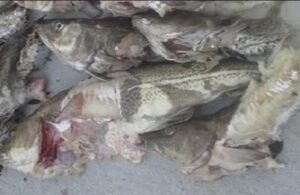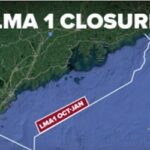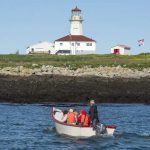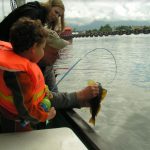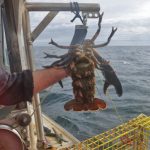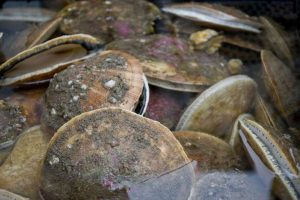Tag Archives: Community Development Quota
North Pacific Fishery Management Council gets review of Bering Sea pollock program
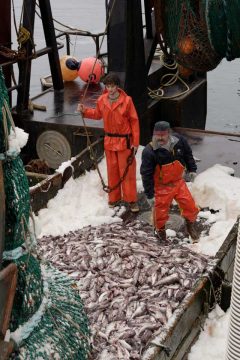 After two years of almost ceaseless contention, the North Pacific regulatory waters have cooled down for now. The Council oversees all federal fisheries between three and 200 miles off the Alaska coast. One of eight regions, the North Pacific fishery is by far the country’s most profitable, having produced two-thirds of the country’s total seafood value in 2015. Over the last two years, the council has been in battle mode over chinook salmon and halibut bycatch, and Gulf of Alaska groundfish catch shares. There have been parades of protest and industry stand-downs and rural Alaska villages emptied to give impassioned pleas alongside Seattle fishing crews and captains. At the council’s Seattle meeting Feb. 1-6, the council rested for the most part, taking scant public comment and few final actions. Rather, it focused on some of the structures behind the chaos, reviewing catch share programs and looking for areas to tune up following two years of pushing the gas. After indefinitely tabling a Gulf of Alaska catch share system four years in the works at its meeting this past December, the council reviewed the schematics behind the Bering Sea pollock fishery, Alaska’s largest fishery by volume. Read the rest of the article here 20:36
After two years of almost ceaseless contention, the North Pacific regulatory waters have cooled down for now. The Council oversees all federal fisheries between three and 200 miles off the Alaska coast. One of eight regions, the North Pacific fishery is by far the country’s most profitable, having produced two-thirds of the country’s total seafood value in 2015. Over the last two years, the council has been in battle mode over chinook salmon and halibut bycatch, and Gulf of Alaska groundfish catch shares. There have been parades of protest and industry stand-downs and rural Alaska villages emptied to give impassioned pleas alongside Seattle fishing crews and captains. At the council’s Seattle meeting Feb. 1-6, the council rested for the most part, taking scant public comment and few final actions. Rather, it focused on some of the structures behind the chaos, reviewing catch share programs and looking for areas to tune up following two years of pushing the gas. After indefinitely tabling a Gulf of Alaska catch share system four years in the works at its meeting this past December, the council reviewed the schematics behind the Bering Sea pollock fishery, Alaska’s largest fishery by volume. Read the rest of the article here 20:36
When residents of an Alaska fishing village can’t fish, normal life comes to an end
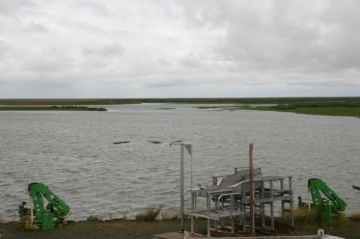 Expensive fishing nets sit on the hardware store shelves, unsold. Families struggle to buy baby diapers, back-to-school clothes and gasoline for boats that take them to favorite berry-picking spots. Some people have seen their water cut off for lack of payment. Normal life is being upended in Quinhagak, a Southwest Alaska fishing village with no fishing this year for the commercial fleet. Skiffs are ready, kings were plentiful, silvers are starting to show up and brokers from the Seattle area who flew to the village say markets are eager for wild Alaska salmon. Frustrated fishermen and village leaders say the problem is their region’s community development nonprofit, which they say provides high salaries for executives and generous stipends for board members but no extra relief for this new stress in what’s already one of the poorest parts of the United States. “They left us with nothing,” said Frank Hill, 44, who had worked as dock supervisor for Coastal Villages. “It’s hard when you have five kids to take care of.” Read this story here 08:23
Expensive fishing nets sit on the hardware store shelves, unsold. Families struggle to buy baby diapers, back-to-school clothes and gasoline for boats that take them to favorite berry-picking spots. Some people have seen their water cut off for lack of payment. Normal life is being upended in Quinhagak, a Southwest Alaska fishing village with no fishing this year for the commercial fleet. Skiffs are ready, kings were plentiful, silvers are starting to show up and brokers from the Seattle area who flew to the village say markets are eager for wild Alaska salmon. Frustrated fishermen and village leaders say the problem is their region’s community development nonprofit, which they say provides high salaries for executives and generous stipends for board members but no extra relief for this new stress in what’s already one of the poorest parts of the United States. “They left us with nothing,” said Frank Hill, 44, who had worked as dock supervisor for Coastal Villages. “It’s hard when you have five kids to take care of.” Read this story here 08:23
Community Development Quota entities also affect Kodiak fisheries
 Fishermen all over America wonder about the special fishing rights given to the Western Alaska near shore villages, about 65 of them by name, in the Magnuson-Stevens Act. That was one of Ted’s biggest blunders. Now, at least one member of a regional fish council appears to be helping corrupt public elections. It’s a mess few understand, but with hundreds of millions a year at stake, and advantages that normal competitors cannot match when it comes to markets for quota catch shares. Tim Smith of Nome is asking for greater transparency and accountability. Here’s his latest piece, edited just for you. Read the rest here 13:35
Fishermen all over America wonder about the special fishing rights given to the Western Alaska near shore villages, about 65 of them by name, in the Magnuson-Stevens Act. That was one of Ted’s biggest blunders. Now, at least one member of a regional fish council appears to be helping corrupt public elections. It’s a mess few understand, but with hundreds of millions a year at stake, and advantages that normal competitors cannot match when it comes to markets for quota catch shares. Tim Smith of Nome is asking for greater transparency and accountability. Here’s his latest piece, edited just for you. Read the rest here 13:35
CDQs bring millions in fishing profits — and jobs — to poor western Alaska villages

Congress tried to honor that connection when it created the Community Development Quota, or CDQ, program, in 1992. Before CDQs, commercial fishing was dominated by outside interests, most notably from foreign countries and other states, said Clem Tillion, who helped create the program as then-Gov. Wally Hickel’s fisheries guru. The program gave six groups, meant to represent a total of 65 communities along a 50-mile stretch of the Bering Sea coast, an allocation in certain Bering Sea fisheries managed by the federal government. The groups are nonprofit corporations that represent a total 27,000 Alaska residents. Each has a set geographic range in Western Alaska, from Atka to Diomede. more@alaskadispatch 13:51

































